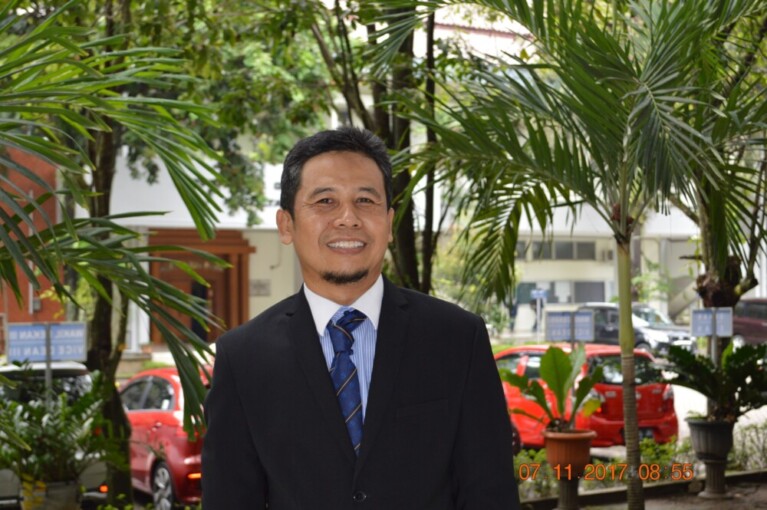
Man is an important component of remote sensing system. As effect of thinking process, visual perception, demographic and emotion factors, the interpretation results among image interpreters also vary.
Meanwhile, Spatial Thinking has been a subject for multidisciplinary studies by psychologists, paedagogist and now geographers because geography has a big potential to develop the Spatial Thinking.
“Through use of geospatial technology, SIG, remote sensing, photogrametry and GPS, geography has the role to also develop Spatial Thinking. It utilises one type of technology, namely remote sensing, for research purposes,” said Bambang Syaeful Hadi, S.Pd., M.Pd., M.Si in the Merapi Auditorium, Faculty of Geography UGM on Tuesday (7/11).
Defending dissertation entitled Effect of Use of Multi-Resolution Spatial Image in Remote Sensing Learning for Student’s Spatial Thinking, Bambang said remote sensing required data users that have high Spatial Thinking ability. Thus, human as data user has to be trained to have a good Spatial Thinking. Among the things to improve it is by remote sensing utilisation.
“Remote sensing needs an interpreter that has high Spatial Thinking ability so that the functional balance of components would produce optimum remote sensing application system. On the other hand, education world needs remote sensing to support the Spatial Thinking development to respond to problems related to spatial matters,” said the lecturer from Universitas Negeri Yogyakarta.
Bambang revealed in his research remote sensing was studied as the media of learning that gives room to do learning activities extensively. Measurement of Spatial Thinking uses instruments that are arranged based on key concepts of Spatial Thinking, integrated with remote sensing.
“Participants are tested in resolving spatial problems and interpreting images that are shown by the level of accuracy results. So, the students need to do a field check as a step to measure the accuracy of interpretation he has conducted,” he said.
Bambang hoped his research would give information on Spatial Thinking, ability to interpret image, ability to use interpretation strategy, remote sensing knowledge, accuracy of interpretation result and ability to resolve spatial problems using image assistance.


